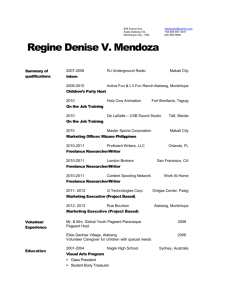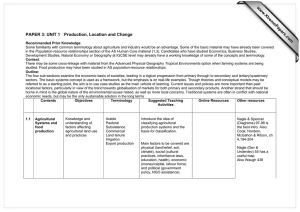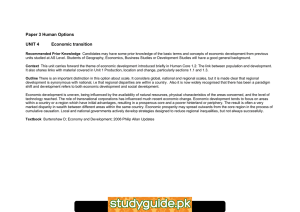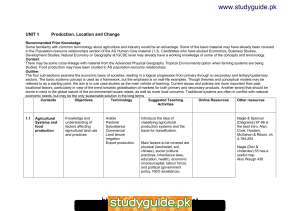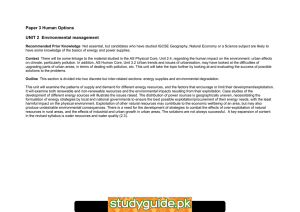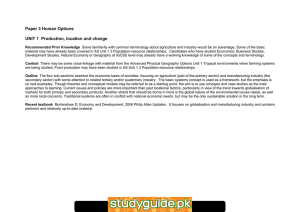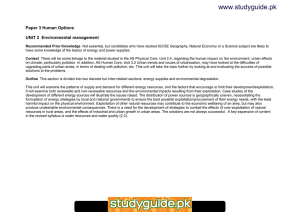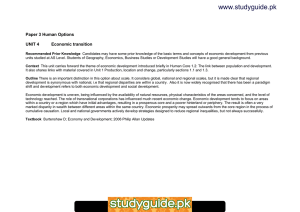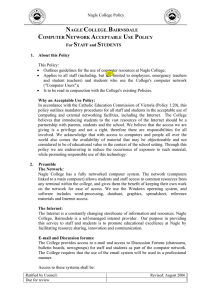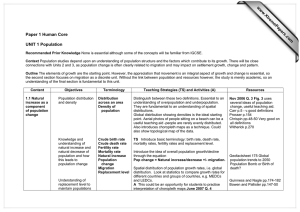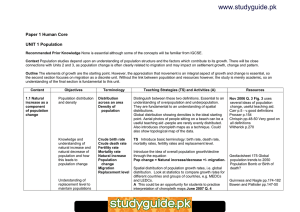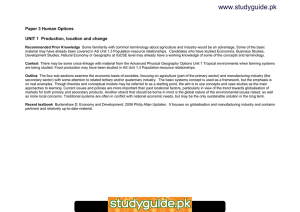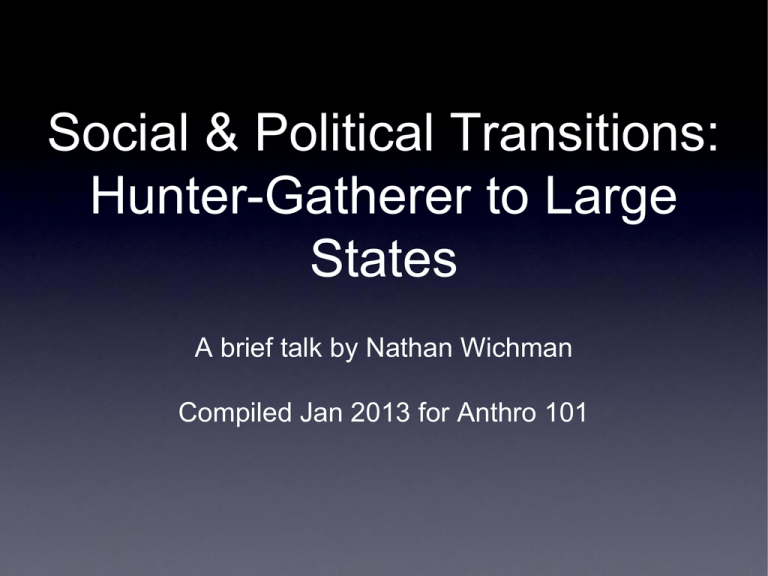
Social & Political Transitions:
Hunter-Gatherer to Large
States
A brief talk by Nathan Wichman
Compiled Jan 2013 for Anthro 101
Introduction
• Middle Eastern societies from huntergatherer through state-level society
•
Applies to cultures worldwide
• note changing gender roles throughout
these societal systems
Early HunterGatherers
• Earliest form of subsistence
• Sole focus on food gathering
• little free time
• Smaller groups are easier to feed
Hunter-Gatherers
Cont.
• Women gather ~70% of food
• Children at 3-4 year intervals for easier
movement (Nagle 2012:4)
• Led by “Big Man” possibly
Agricultural
Revolution
• Neolithic Revolution
• 8000-6000 BCE
• Reason for occurring not known
• Settling along rivers in Mesopotamia
• Starting to raise crops
http://images.wikia.com/althistory/images/1/14/World_Map_Special_Cold_Wa
r.png
http://www.indepthinfo.com/historyancient/images/map-ofmesopotamia.jpg
http://timewatch.greathistory.com/file
s/2010/02/Timewatchmesopotamia2.jpg
Agricultural
Revolution
• Not just agriculture
• Pastoralism
• Extensive irrigation required
• Focus on cultivated land
• Constant food source
Social changes
• Larger communities
• Acquisition of material goods
• Less needed of women
• Increase in child frequency
• Religion defines hierarchy
State & Urban
Revolution
• Populations in thousands
• Socioeconomic stratification
• Large economy = writing
• Temples have some influence
• Constant warfare
Economy in Cities
• Fewer % required to gather food
• More time for other endeavors
• Specialties in crafts appear
• Politicians appear to deal with justice
• Politicians have wealth
• Economic class system (includes
“slaves”)
• Writing evolves from large economy
(Nagle 2010:7)
Standard of Ur
http://www2.econ.iastate.edu/classes/econ355/choi/bab.htm
Temples
&
Women
• Temples held lots of land (NOT
overwhelming)
• Kings blessed by gods
• Path for women to achieve status
• “Sometimes the priestesses outlived their
own dynasties becoming the only
legitimating link between one dynasty
and the next” (Nagle 2010:9)
• Some women used manipulation of male
relatives
Conclusion
• Hunter-gatherers
• Settle and start farming
• Grow into powerful city states.
•
•
•
•
•
•
•
•
•
•
•
Working Bibliography
Kottak, Conrad P.
2012
Mirror for Humanity, A Concise Introduction to Cultural Anthropology 8th ed., New
York, NY: McGraw-Hill
Nagle, D. Brendan
2010
The Ancient World: A Social and Cultural History 7th ed. Upper Saddle River, NJ:
Pearson Prentice Hall
Nagle, D. Brendan
2010
The Ancient World: Readings in Social and Cultural History 4th ed. edited by Brendan
D. Nagle and Stanley M Burnstien. Upper Saddle River, NJ: Pearson Prentice Hall
Babylonian Culture and Tablets, http://www2.econ.iastate.edu/classes/econ355/choi/bab.htm
Accessed 23 Jan 2013
Image Bibliography:
World map from:
http://images.wikia.com/althistory/images/1/14/World_Map_Special_Cold_War.png
Fertile crescent map from: http://timewatch.greathistory.com/files/2010/02/Timewatchmesopotamia2.jpg

